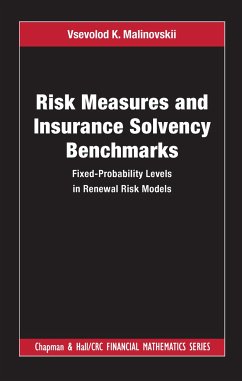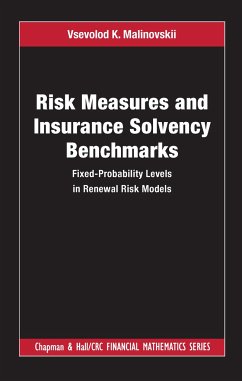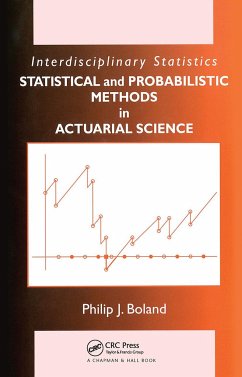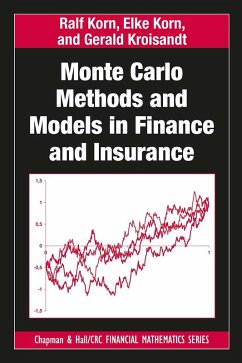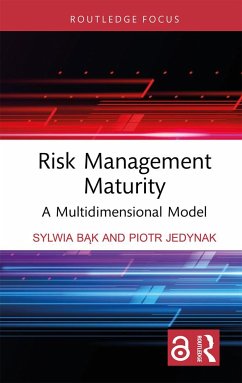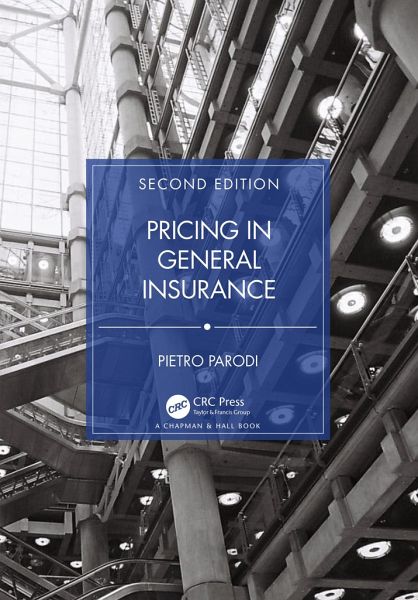
Pricing in General Insurance
Versandkostenfrei!
Versandfertig in 6-10 Tagen
89,99 €
inkl. MwSt.
Weitere Ausgaben:

PAYBACK Punkte
45 °P sammeln!
Based on the syllabus of the actuarial profession courses on general insurance pricing - with additional material inspired by the author's own experience as a practitioner and lecturer - Pricing in General Insurance, Second Edition presents pricing as a formalised process that starts with collecting information about a particular policyholder or risk and ends with a commercially informed rate.The first edition of the book proved very popular among students and practitioners with its pragmatic approach, informal style, and wide-ranging selection of topics, including:Background and context for p...
Based on the syllabus of the actuarial profession courses on general insurance pricing - with additional material inspired by the author's own experience as a practitioner and lecturer - Pricing in General Insurance, Second Edition presents pricing as a formalised process that starts with collecting information about a particular policyholder or risk and ends with a commercially informed rate.
The first edition of the book proved very popular among students and practitioners with its pragmatic approach, informal style, and wide-ranging selection of topics, including:
Background and context for pricingProcess of experience rating, ranging from traditional approaches (burning cost analysis) to more modern approaches (stochastic modelling)Exposure rating for both property and casualty productsSpecialised techniques for personal lines (e.g., GLMs), reinsurance, and specific products such as credit risk and weather derivativesGeneral-purpose techniques such as credibility, multi-line pricing, and insurance optimisation
The second edition is a substantial update on the first edition, including:
New chapter on pricing models: their structure, development, calibration, and maintenanceNew chapter on rate change calculations and the pricing cycleSubstantially enhanced treatment of exposure rating, increased limit factors, burning cost analysisExpanded treatment of triangle-free techniques for claim count developmentImproved treatment of premium building and capital allocationExpanded treatment of machine learningEnriched treatment of rating factor selection, and the inclusion of generalised additive models
The book delivers a practical introduction to all aspects of general insurance pricing and is aimed at students of general insurance and actuarial science as well as practitioners in the field. It is complemented by online material, such as spreadsheets which implement the techniques described in the book, solutions to problems, a glossary, and other appendices - increasing the practical value of the book.
The first edition of the book proved very popular among students and practitioners with its pragmatic approach, informal style, and wide-ranging selection of topics, including:
Background and context for pricingProcess of experience rating, ranging from traditional approaches (burning cost analysis) to more modern approaches (stochastic modelling)Exposure rating for both property and casualty productsSpecialised techniques for personal lines (e.g., GLMs), reinsurance, and specific products such as credit risk and weather derivativesGeneral-purpose techniques such as credibility, multi-line pricing, and insurance optimisation
The second edition is a substantial update on the first edition, including:
New chapter on pricing models: their structure, development, calibration, and maintenanceNew chapter on rate change calculations and the pricing cycleSubstantially enhanced treatment of exposure rating, increased limit factors, burning cost analysisExpanded treatment of triangle-free techniques for claim count developmentImproved treatment of premium building and capital allocationExpanded treatment of machine learningEnriched treatment of rating factor selection, and the inclusion of generalised additive models
The book delivers a practical introduction to all aspects of general insurance pricing and is aimed at students of general insurance and actuarial science as well as practitioners in the field. It is complemented by online material, such as spreadsheets which implement the techniques described in the book, solutions to problems, a glossary, and other appendices - increasing the practical value of the book.




